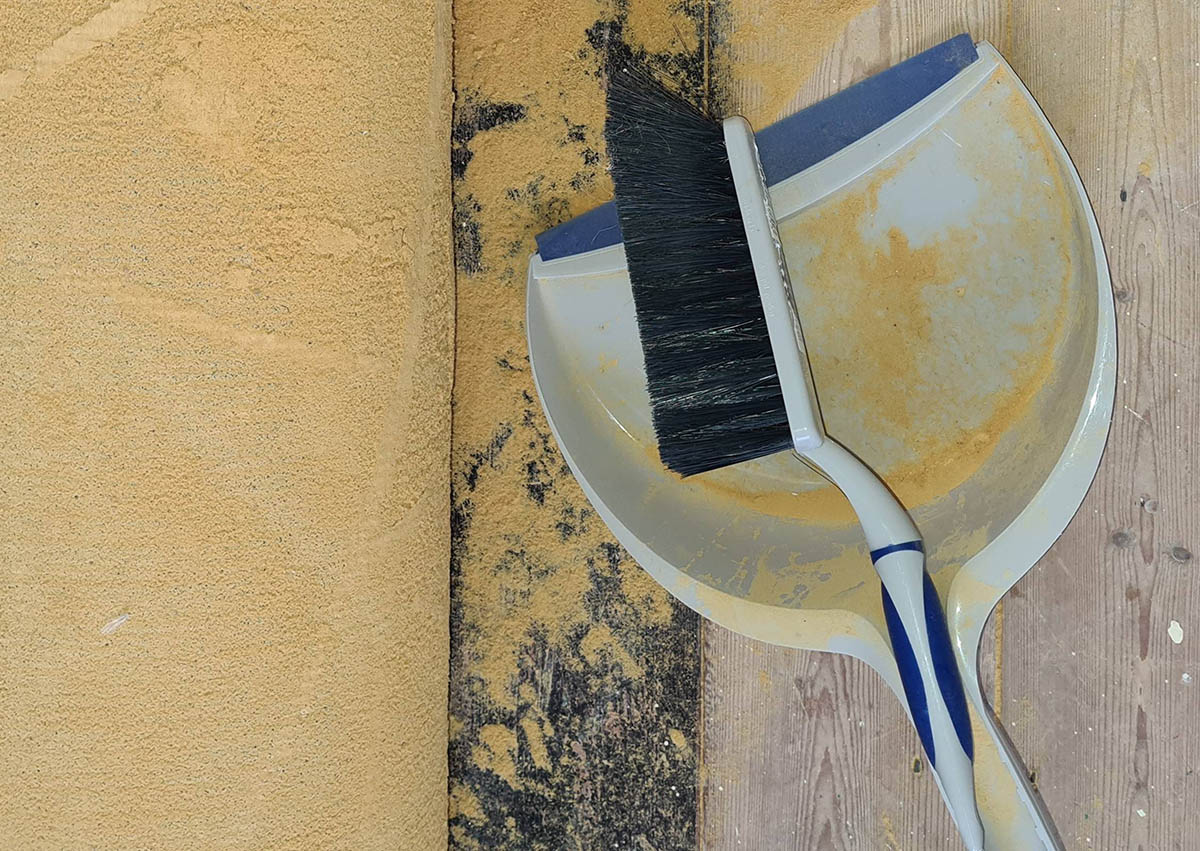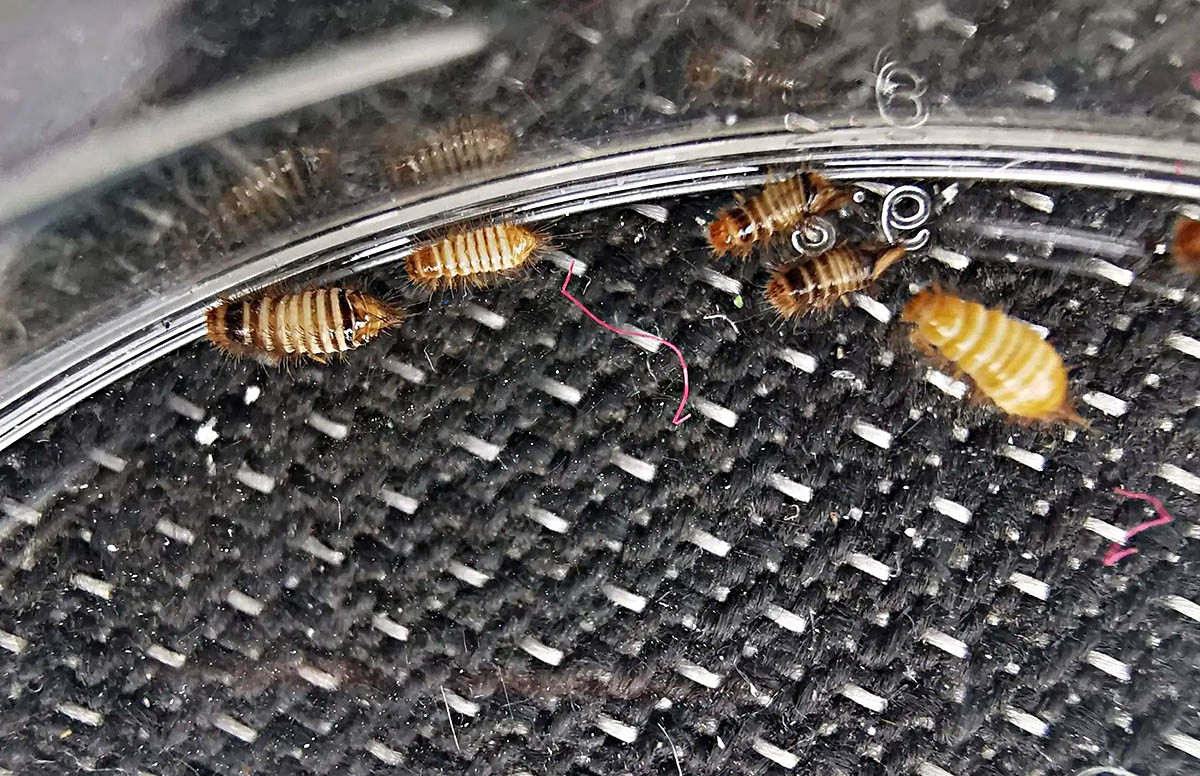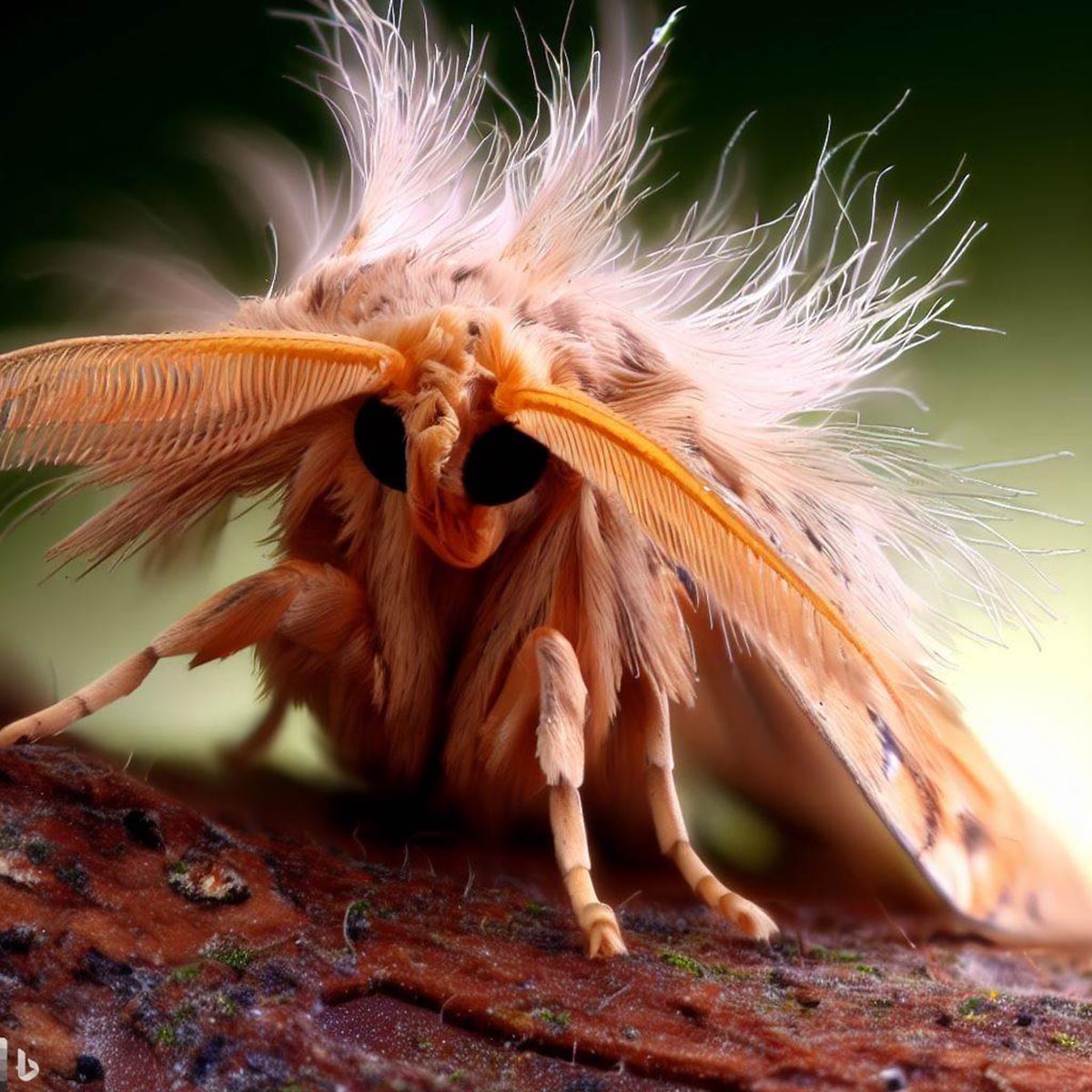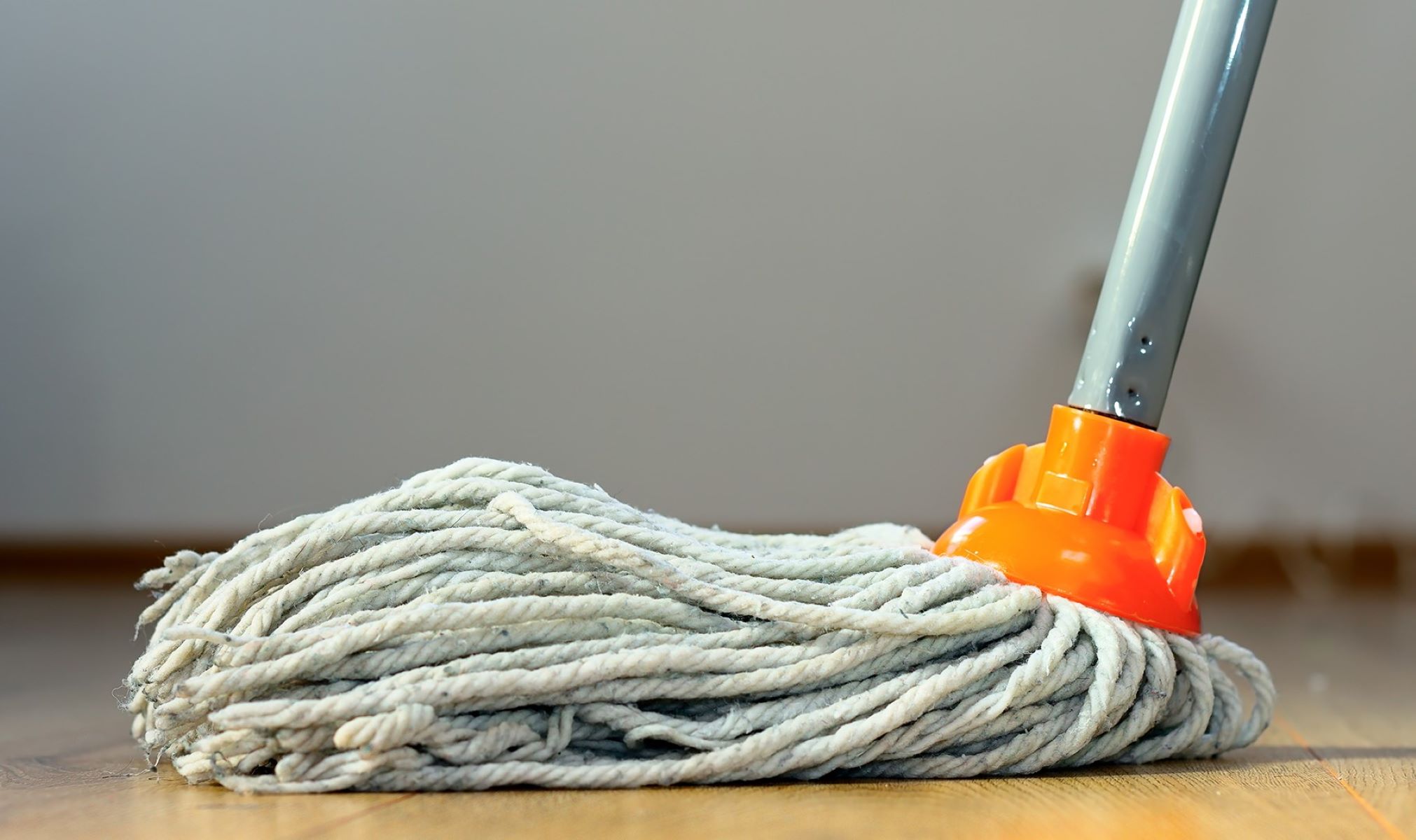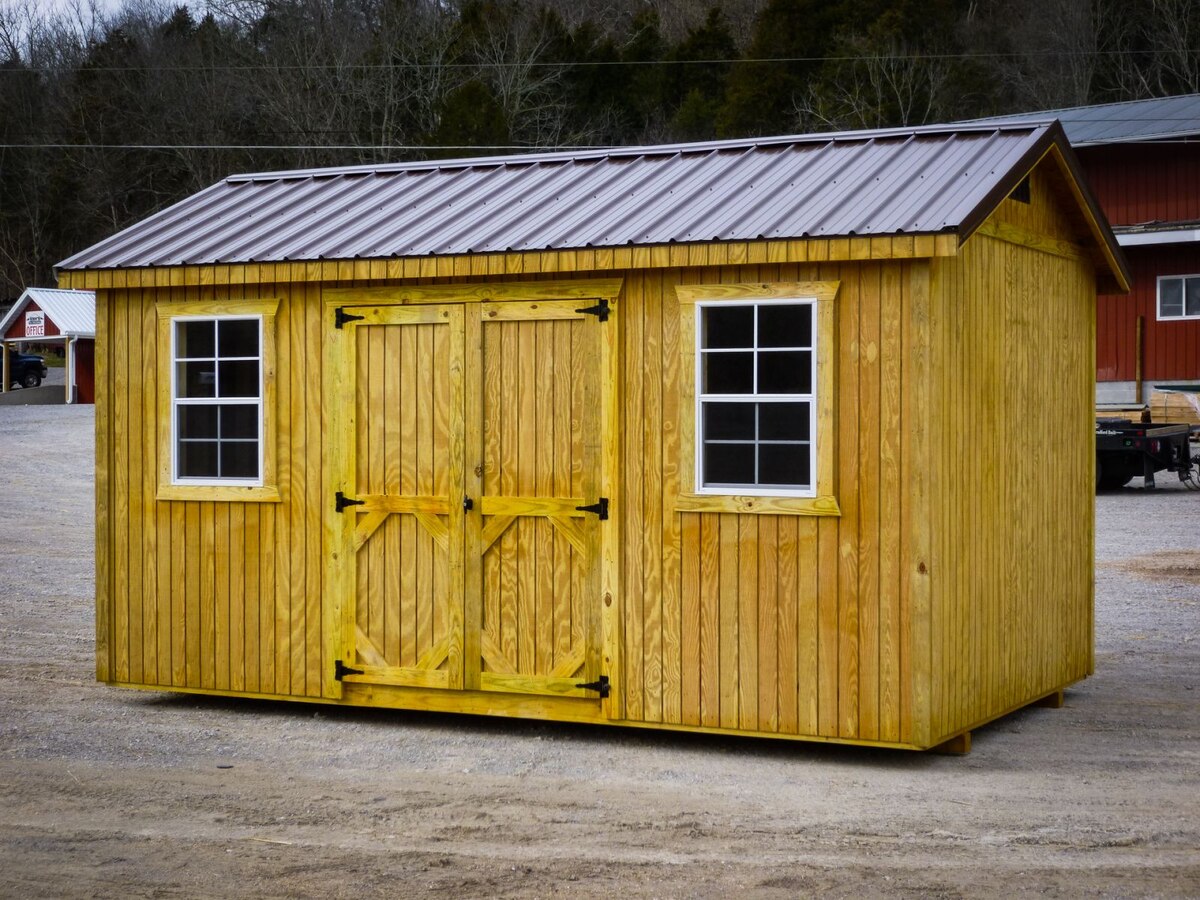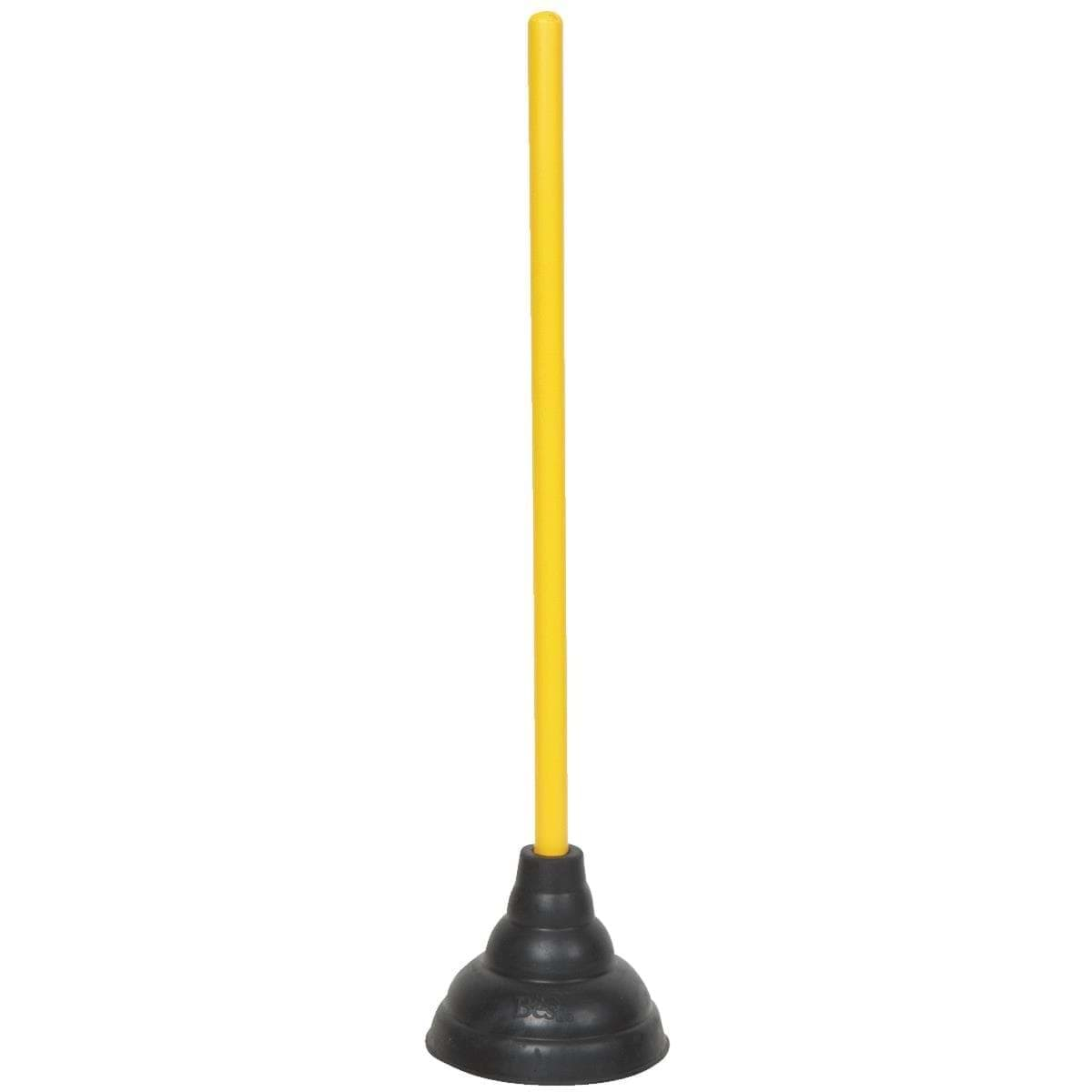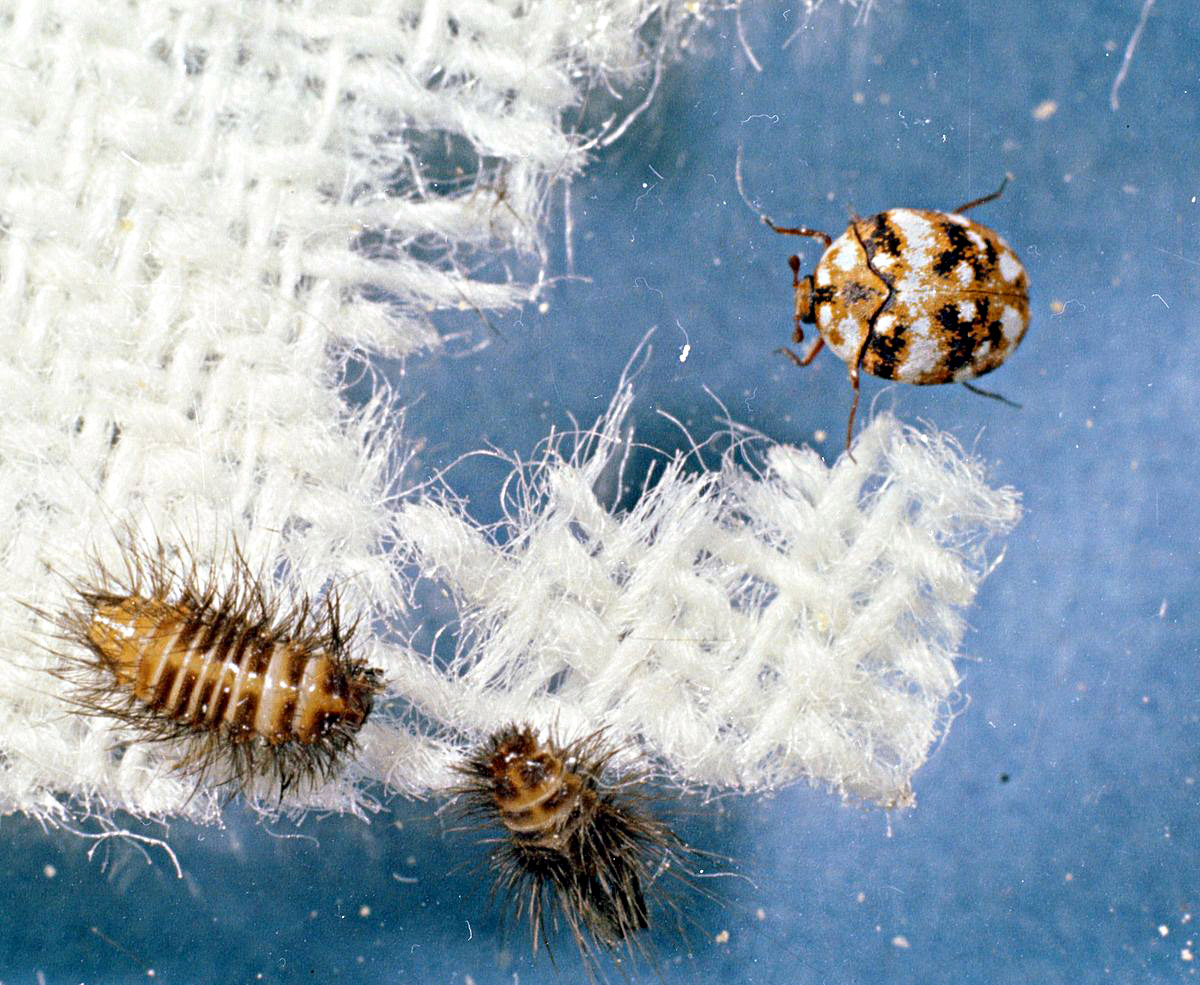

Articles
What Does A Carpet Beetle Larvae Look Like
Modified: March 6, 2024
Discover what carpet beetle larvae look like in this informative article. Learn how to identify these pests and take necessary steps to prevent an infestation.
(Many of the links in this article redirect to a specific reviewed product. Your purchase of these products through affiliate links helps to generate commission for Storables.com, at no extra cost. Learn more)
Introduction
Carpet beetle larvae are small, voracious pests that can cause significant damage to textiles, fabrics, and other organic materials in our homes. While adult carpet beetles are relatively harmless, it is the larvae stage that poses the greatest threat. These larvae have a distinct appearance and behavior that sets them apart from other common household pests.
In this article, we will explore the physical characteristics, behavior, habitat, life cycle, and the damage caused by carpet beetle larvae. We will also discuss methods for preventing and controlling these pests to safeguard our homes and belongings.
Understanding carpet beetle larvae is crucial for early detection and effective pest management. So, let’s dive into the fascinating world of carpet beetle larvae and learn what makes them such formidable foes.
Key Takeaways:
- Carpet beetle larvae are small, hairy pests that can cause significant damage to fabrics and organic materials in our homes. Understanding their appearance, behavior, and life cycle is crucial for effective prevention and control.
- To protect our belongings from carpet beetle larvae, we can implement simple measures like regular cleaning, proper storage, and monitoring for signs of infestation. By staying proactive, we can minimize the impact of these destructive pests.
Read more: What Does A Carpet Beetle Look Like
Physical Characteristics of Carpet Beetle Larvae
Carpet beetle larvae are small, oval-shaped insects that measure about 1/8 to 1/4 inch in length. They have a unique appearance that distinguishes them from other common household pests.
One of the most distinguishing features of carpet beetle larvae is their bristly, hairy appearance. These tiny hairs, called setae, cover their bodies and provide a protective barrier against predators. The setae are usually brown or amber in color and can be seen under close inspection.
Carpet beetle larvae have a segmented body, consisting of three distinct regions: the head, thorax, and abdomen. The head is small and rounded, while the thorax is slightly larger and connects to the abdomen. The abdomen is elongated and tapers towards the rear end.
At the front of their heads, carpet beetle larvae possess a pair of strong, sharp mandibles that they use to chew through various materials. These mandibles play a vital role in their feeding habits and contribute to the damage they can cause to fabrics and other organic materials.
The larvae also have six small, stubby legs located towards the front of their bodies. While these legs are not very prominent, they assist the larvae in crawling and exploring their surroundings. It is important to note that the larvae of the carpet beetle undergo multiple molts as they grow, shedding their exoskeleton and developing into larger, more mature stages. Therefore, the appearance and size of the larvae may vary depending on their developmental stage.
Carpet beetle larvae come in a range of colors, including shades of brown, black, and white. Their coloration often helps them blend in with their environment, making them difficult to spot until significant damage has already occurred.
With their hairy bodies, distinctive setae, segmented structure, and chewing mandibles, carpet beetle larvae possess unique physical characteristics that aid them in their destructive behaviors.
Behavior and Habitat of Carpet Beetle Larvae
Carpet beetle larvae are highly adaptable and can thrive in a variety of environments. They prefer dark and secluded areas where they can feed undisturbed. Understanding their behavior and habitat is crucial in preventing and controlling infestations in our homes.
Carpet beetle larvae are voracious eaters and have a diverse diet consisting of natural fibers, such as wool, silk, and cotton, as well as animal products like feathers, furs, and leather. They can also feed on dried food products, including cereals and pet food. This wide-ranging diet makes them a significant threat to our valuable possessions.
These larvae are photophobic, meaning they are sensitive to light, and therefore, prefer to reside in dark and hidden areas, such as closets, attics, basements, and behind furniture. They are also adept at hiding within cracks and crevices, making it challenging to spot their presence until damage has already occurred.
Carpet beetle larvae are resilient and can survive in various climates. They are known to thrive in both warm and cool conditions, with optimal temperature ranges between 50 to 95 degrees Fahrenheit. This adaptability allows them to infest homes throughout the year, regardless of the season.
When it comes to behavior, carpet beetle larvae are active and constantly on the move. They are capable of crawling across different surfaces, seeking out sources of food. Their hairy bodies aid in their movements by allowing them to grip onto surfaces and navigate their surroundings with ease.
Carpet beetle larvae are also known for their destructive nature. They feed on a wide range of materials, chewing through fabrics, upholstery, carpets, and even stored food products. Their feeding habits can result in significant damage, including holes, webbing, and irregular patterns on affected items.
It is important to note that carpet beetle larvae undergo different stages of development, progressing from small, newly hatched larvae to larger, mature stages. As they grow, their appetite and feeding activities intensify, leading to increased damage.
By understanding the behavior and habitat of carpet beetle larvae, we can take proactive measures to minimize their presence and protect our belongings from their destructive feeding habits.
Life Cycle of Carpet Beetle Larvae
The life cycle of carpet beetles consists of four distinct stages: egg, larva, pupa, and adult. Understanding the life cycle of carpet beetle larvae is crucial for effective control and prevention strategies.
The life cycle begins when adult carpet beetles lay their eggs. The female beetles are attracted to dark and undisturbed areas with a suitable food source. These areas may include carpets, rugs, stored clothing, or upholstered furniture.
Once the eggs are laid, they typically hatch within one to three weeks, depending on the environmental conditions. The larvae emerge from the eggs and immediately begin their search for food. They are often attracted to areas where organic materials are present.
The larval stage is the most damaging stage of the carpet beetle life cycle. During this phase, the larvae actively feed and grow in size. They undergo several molts, shedding their exoskeletons to accommodate their increasing size and reaching maturity over several months.
As the larvae grow, they leave behind a trail of damage, including holes, webbing, and discoloration on textiles and other organic materials. It is during this stage that they cause the most significant harm to our belongings. Proper identification of carpet beetle larvae during their larval stage is crucial in order to implement effective control measures.
Once the larvae reach their desired size, they enter the pupal stage. During this stage, they create a protective cocoon-like structure around themselves, often made of their molted exoskeleton and strands of silk. This pupal stage can last anywhere from a few weeks to several months, depending on the environmental conditions.
After completing their pupal stage, the adult carpet beetles emerge. These beetles are often small and vary in color depending on the species. They have a distinctive hard exoskeleton, wings, and are capable of flying. Adult carpet beetles primarily feed on nectar and pollen, and their sole purpose is to reproduce and continue the life cycle.
The complete life cycle of carpet beetles can take anywhere from several months to a year, depending on various factors such as temperature, humidity, and available food sources.
Understanding the life cycle of carpet beetle larvae is crucial for effective control and prevention strategies. By targeting the larvae stage and disrupting their development, we can minimize the damage caused by carpet beetles and protect our belongings from infestations.
Carpet beetle larvae are small, oval-shaped, and covered in tiny hairs. They are usually brown or black with a striped pattern. Keep an eye out for these characteristics when identifying carpet beetle larvae.
Damage Caused by Carpet Beetle Larvae
Carpet beetle larvae are not just a nuisance, but also a significant threat to our valuable possessions. Their destructive feeding habits can cause extensive damage to fabrics, textiles, and other organic materials found in our homes.
One of the most common damages caused by carpet beetle larvae is holes in fabrics. These larvae chew through natural fibers like wool, silk, and cotton, leaving behind irregularly shaped holes in clothing, carpets, rugs, upholstery, and even curtains. The damage is often concentrated in hidden areas or along the edges of the material.
In addition to creating holes, carpet beetle larvae can also cause webbing or mats on fabrics. These larvae leave behind silk-like threads, which can create web-like structures or tangled masses of fibers on the surface of infested items.
Another form of damage caused by carpet beetle larvae is the discoloration of fabrics. They may feed on the pigments found in fabrics, resulting in faded or discolored areas. This can be particularly noticeable on clothing, upholstery, and other textiles.
Carpet beetle larvae are not solely confined to fabrics. They can also feed on and damage other organic materials such as feathers, furs, leather, and even stored food products like cereals and pet food. Their appetite for a diverse range of materials makes them a versatile pest capable of causing damage in various areas of our homes.
The damage caused by carpet beetle larvae can be significant, especially if left undetected and untreated. Their feeding habits can compromise the structural integrity of fabrics and other materials, leading to the need for costly repairs or replacement.
Furthermore, an infestation of carpet beetle larvae can result in financial losses, as cherished belongings, heirlooms, and valuable textiles may be irreversibly damaged beyond repair.
It is essential to be vigilant and identify any signs of carpet beetle larvae infestation early on. Regularly inspecting vulnerable items such as clothing, carpets, and stored fabrics can help catch an infestation in its early stages, allowing for prompt intervention and damage control.
By understanding the damage caused by carpet beetle larvae, we can take appropriate measures to protect our belongings and minimize the impact of these destructive pests.
Read more: What Does Mold In A Carpet Look Like
Prevention and Control Methods
Preventing and controlling carpet beetle infestations is essential to safeguard our homes and belongings from the damage caused by their larvae. By implementing the following prevention and control methods, we can effectively manage carpet beetle populations:
- Maintain cleanliness: Regularly clean and vacuum your home, paying special attention to areas that are often overlooked, such as closets, under furniture, and along baseboards. Vacuuming helps remove carpet beetle larvae, eggs, and food sources from your home.
- Proper storage: Store susceptible items such as woolens, furs, and textiles in sealed containers or garment bags to prevent carpet beetles from accessing them. This is particularly important during periods of inactivity or when these items are not in use.
- Monitor and inspect: Routinely inspect clothing, upholstery, carpets, and other susceptible materials for signs of carpet beetles or larvae. Look for holes, webbing, or discoloration as indicators of infestation.
- Eliminate food sources: Clean up food spills promptly, especially dried food products such as cereals or pet food, as carpet beetle larvae can feed on these items. Properly seal and store food items in airtight containers to deter carpet beetles from accessing them.
- Seal entry points: Seal any cracks or gaps in windows, doors, and walls, as these can serve as entry points for carpet beetles. Preventing their entry into your home is a key step in preventing infestation.
- Consider professional pest control: If infestations persist or become severe, it may be necessary to seek help from professional pest control services. They have the expertise and tools to effectively eliminate carpet beetles and provide long-lasting solutions.
- Natural remedies: There are also natural remedies that can help deter carpet beetles, such as using cedar chips or sachets in closets or storage areas, lavender oil, or diatomaceous earth. However, it is important to note that these remedies may not completely eliminate the infestation and should be used in conjunction with other prevention methods.
By following these prevention and control methods, we can reduce the likelihood of carpet beetle infestations and protect our homes and belongings from the damage caused by their larvae. Consistency and diligence are key in ensuring long-term success in managing these pests.
Conclusion
Carpet beetle larvae may be small in size, but their potential for damage should not be underestimated. These voracious pests can wreak havoc on our fabrics, textiles, and other organic materials, causing expensive repairs and irreparable damage to our belongings.
Understanding the physical characteristics, behavior, habitat, life cycle, and damage caused by carpet beetle larvae is crucial in effectively preventing and controlling infestations. By familiarizing ourselves with the signs of infestation and implementing proactive measures, we can minimize their impact on our homes.
Maintaining cleanliness, proper storage, regular inspections, and eliminating food sources are key preventive measures to reduce the risk of carpet beetle larvae infestation. Sealing entry points and considering professional pest control services can also provide effective solutions if infestations become severe.
It is important to be vigilant and proactive when it comes to dealing with carpet beetles. Early detection and intervention are crucial in preventing further damage and reducing the likelihood of widespread infestations.
Remember, prevention is always better than cure. By taking preventative measures, we can protect our valuable possessions, preserve our fabrics, and minimize the financial impact of carpet beetle infestations.
So, stay informed, stay proactive, and keep those carpet beetle larvae at bay to maintain a pest-free and damage-free home.
Frequently Asked Questions about What Does A Carpet Beetle Larvae Look Like
Was this page helpful?
At Storables.com, we guarantee accurate and reliable information. Our content, validated by Expert Board Contributors, is crafted following stringent Editorial Policies. We're committed to providing you with well-researched, expert-backed insights for all your informational needs.
